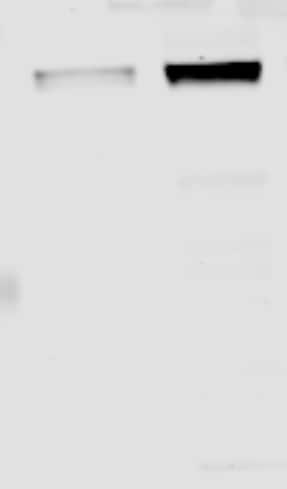| Reactivity | Hu, Mu, Rt, Ye, Po, Bv, Pm, RM, ShSpecies Glossary |
| Applications | WB, Func, ICC/IF, IHC, IP |
| Clonality | Polyclonal |
| Host | Rabbit |
| Conjugate | Unconjugated |
| Format | BSA Free |
| Immunogen | Recombinant protein encompassing a sequence within the center region of human PGK1. The exact sequence is proprietary. |
| Localization | Cytoplasm |
| Predicted Species | Porcine (96%), Chimpanzee (100%), Bovine (96%), Rhesus Macaque (100%), Sheep (96%). Backed by our 100% Guarantee. |
| Isotype | IgG |
| Clonality | Polyclonal |
| Host | Rabbit |
| Gene | PGK1 |
| Purity | Antigen Affinity-purified |
| Innovator's Reward | Test in a species/application not listed above to receive a full credit towards a future purchase. |
| Dilutions |
|
|
| Theoretical MW | 45 kDa. Disclaimer note: The observed molecular weight of the protein may vary from the listed predicted molecular weight due to post translational modifications, post translation cleavages, relative charges, and other experimental factors. |
|
| Reviewed Applications |
|
|
| Publications |
|
| Storage | Aliquot and store at -20C or -80C. Avoid freeze-thaw cycles. |
| Buffer | PBS, 20% Glycerol |
| Preservative | 0.025% Proclin 300 |
| Purity | Antigen Affinity-purified |
| Publication using NBP2-19784 | Applications | Species |
|---|---|---|
| Khurana N, Laskar S, Bhattacharyya MK, Bhattacharyya S. Hsp90 induces increased genomic instability towards DNA damaging agents by tuning down RAD53 transcription. Mol. Biol. Cell 2016-06-15 [PMID: 27307581] (WB) | WB |
| Images | Ratings | Applications | Species | Date | Details | ||||||||
|---|---|---|---|---|---|---|---|---|---|---|---|---|---|

Enlarge |
reviewed by:
Min-Joon Han |
WB | Human | 08/16/2018 |
Summary
|
Secondary Antibodies |
Isotype Controls |
Research Areas for PGK1 Antibody (NBP2-19784)Find related products by research area.
|
The concentration calculator allows you to quickly calculate the volume, mass or concentration of your vial. Simply enter your mass, volume, or concentration values for your reagent and the calculator will determine the rest.